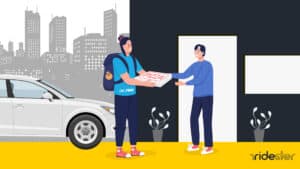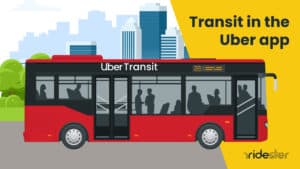Key Information
Definition & Cost-Effectiveness:
Carpooling lets individuals share rides to common destinations, significantly reducing individual commuting costs compared to using ridesharing services like Uber.
Environmental and Traffic Benefits
By reducing vehicles on roads, carpooling decreases traffic congestion and carbon emissions, promoting an eco-friendly commute.
Differences from Rideshare
Unlike profit-driven rideshares, carpooling has people splitting trip costs. Routes are predictable, and it’s generally more affordable without service or surge fees.
Modern Carpooling Solutions
Technology-backed services like Waze Carpool and Scoop connect carpoolers, ensuring safe, convenient, and matched rides.
What is Carpooling?
A carpool is a ride that’s shared by at least two people who are headed in the same direction. In some cases, all of the carpoolers will arrange to meet in a designated location, while in others, the car owner may pick up riders along the way to their destination.
Unless otherwise discussed with your fellow carpoolers, each person will receive a ride home or back to the meetup spot, too.
While carpools are often formed for a one-time trip, perhaps for a long-distance road trip, coworkers and students who join recurring carpools will see the greatest impact on their wallets over time.
At the most, you’ll be paying for half the fuel costs that you normally would when getting to and from work or school. The more people you get to join your carpool, the more the cost of your commute will go down.
You’ve probably carpooled at some point
While you may not have formally realized it, if you’ve ever arranged to ride with friends and split the gas or buy them a meal in exchange for a ride, you’ve carpooled.
Benefits of Carpooling
Now that you have a taste of the differences between ridesharing and carpooling, we’ll dive a little deeper into how carpools can help you (and others on the road) out. Here are six benefits of sharing your ride:
1. Save Money
Affordability is clearly one of the greatest benefits of sharing a ride. By splitting the cost of your commute, you’ll end up at least cutting your expenses in half. Your carpool will also only need to pay for one toll fee and one parking space with every ride.
If you’re driving a relatively short distance with a large carpool (or, better yet, a 15-person vanpool), it’s possible that your ride cost could be comparable to or lower than the price of public transit.
2. Ride the HOV Lane
If your commute requires you to use the freeway, you can expect to save a huge amount of time during rush hour.
Instead of driving in the most heavily congested lanes, like the 76.3% of drivers who commute alone, you’ll gain access to the express lane just by sharing a car. Your HOV lane route helps you avoid rushing to get out the door each morning and ensures you get home faster every evening.
3. Reduce Traffic Congestion
When you start carpooling and making use of empty seats, you are helping reduce the amount of vehicles on the road.
Think about it: When an average sedan is filled to capacity, that’s four less full-sized cars on the road. Joining a carpool will help you play your part in reducing the heavy congestion that many metropolitan areas are known for.
On the other hand, taking Uber and Lyft actually worsens traffic by adding drivers who are simply waiting for requests onto the roads. Carpools are a smart solution for not only saving your time, but saving the time of everyone else on the road, as well.
4. Get Workplace or School Perks
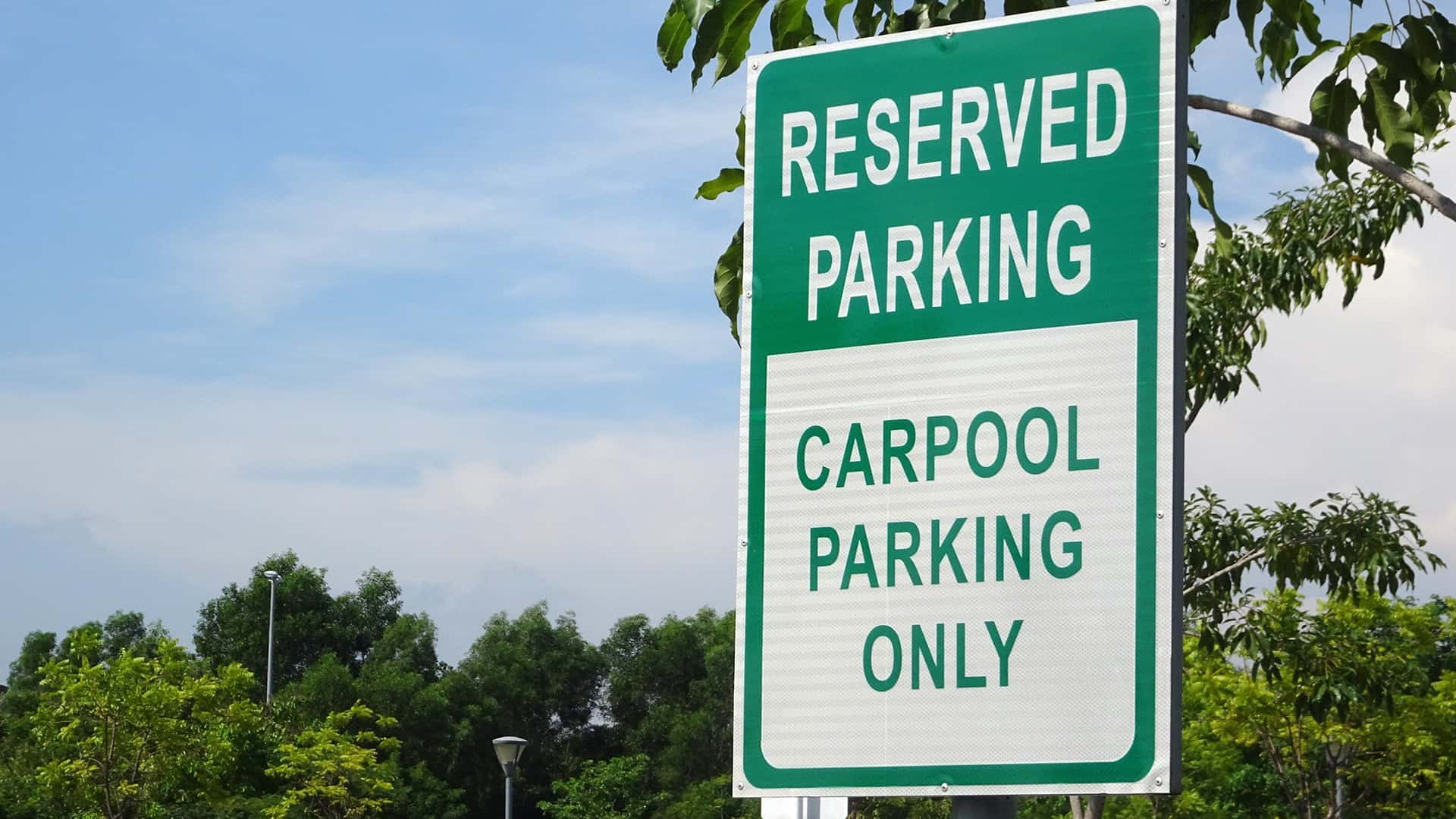
Many universities and companies will actually offer special benefits to students and employees who commit to carpooling.
For example, you may receive a carpool permit that gets you better spots in the parking lot, or you may get cash rewards for trading in your individual parking permits for a shared one. Some businesses even create competitions in which the group who carpools the most will get a prize.
We always recommend asking your organization if they currently have any perks set up, as carpool programs aren’t always well-advertised, even if they exist.
5. Lower Carbon Emissions
Taking unnecessary cars off the road also has a great environmental impact. It lowers carbon emissions while reducing the level of pollution in the air. While this benefit may not be obvious, your carpool again helps you play your part in improving air quality for your entire city and world.
6. Decrease Stress
Finally, carpooling can help you relieve stress before and after work.
With familiar faces to chat with, you won’t have to think about work or face the traffic alone. Carpools are also far more comfortable than public transit, as you’ll be surrounded only by people you know in a private vehicle, allowing you to relax — with your eyes on the road if you’re driving, of course.
How to Start a Carpool

Organizing a carpool isn’t as hard as it may seem. Even if you don’t have access to any carpool matching services, you may be able to find someone in your area who’s looking to save money, too.
Here are three simple steps you can take to start sharing your ride:
1. Reach Out to Your Peers
Whether you’re posting in your company Slack, a Facebook group for your organization, or reaching out to peers directly, there are plenty of ways to reach your colleagues these days. Simply make a post about your route, giving general cross streets, times, and a phone number or email to reach out to you at.
As you get inquiries, you can immediately start discussing details about your commute or, if you don’t personally know someone, simply start getting to know each other and chatting about expectations.
You definitely want to make sure you’re starting a carpool with reliable people you trust and drivers who have a valid license and insurance policy.
2. Solidify Details
In addition to making sure everyone has each other’s contact information, you’ll also want to make sure that your carpool buddies know exactly when and where to meet up. Make it clear what happens if a fellow carpooler doesn’t show up within five minutes of your meetup time.
Drivers should also be assigned for each day. You will also need to consider what’s expected in terms of fuel costs and payment methods.
If only a portion of your carpool group will be driving, you may consider calculating what’s owed for gas based on the current IRS standard mileage rate, and perhaps adding a little extra to cover car maintenance costs.
If everyone will be driving equally as much, you may decide to require no payment, as long as everyone sticks to the driving schedule
3. Start Carpooling
Once your schedule and carpool terms are agreed upon, you’re all set to start carpooling. This should be a fairly smooth process, as long as everyone understands what’s expected of them.
If someone drops out of your carpool, simply make adjustments until you find another member to join you. It’s inevitable that needs and even schedules will shift, so it’s important to be flexible in the event of any changes.
The Best Carpooling Services & Apps
One of the biggest challenges of carpooling is finding people to commit with.
Just because someone is headed in the same direction doesn’t necessarily mean that they have the same schedule. Even when they do, poor planning and communication can cause the carpool to fizzle out quickly.
Thanks to modern technology, traditional carpools have gotten a makeover. Whereas they once depended on highly unorganized texts, calls, and verbal agreements, many new solutions are making shared costs and carpool scheduling easier to manage than ever.
Here are three of the best carpool solutions that you can start using today:
Waze Carpool
Scoop
Zimride
1. Waze Carpool
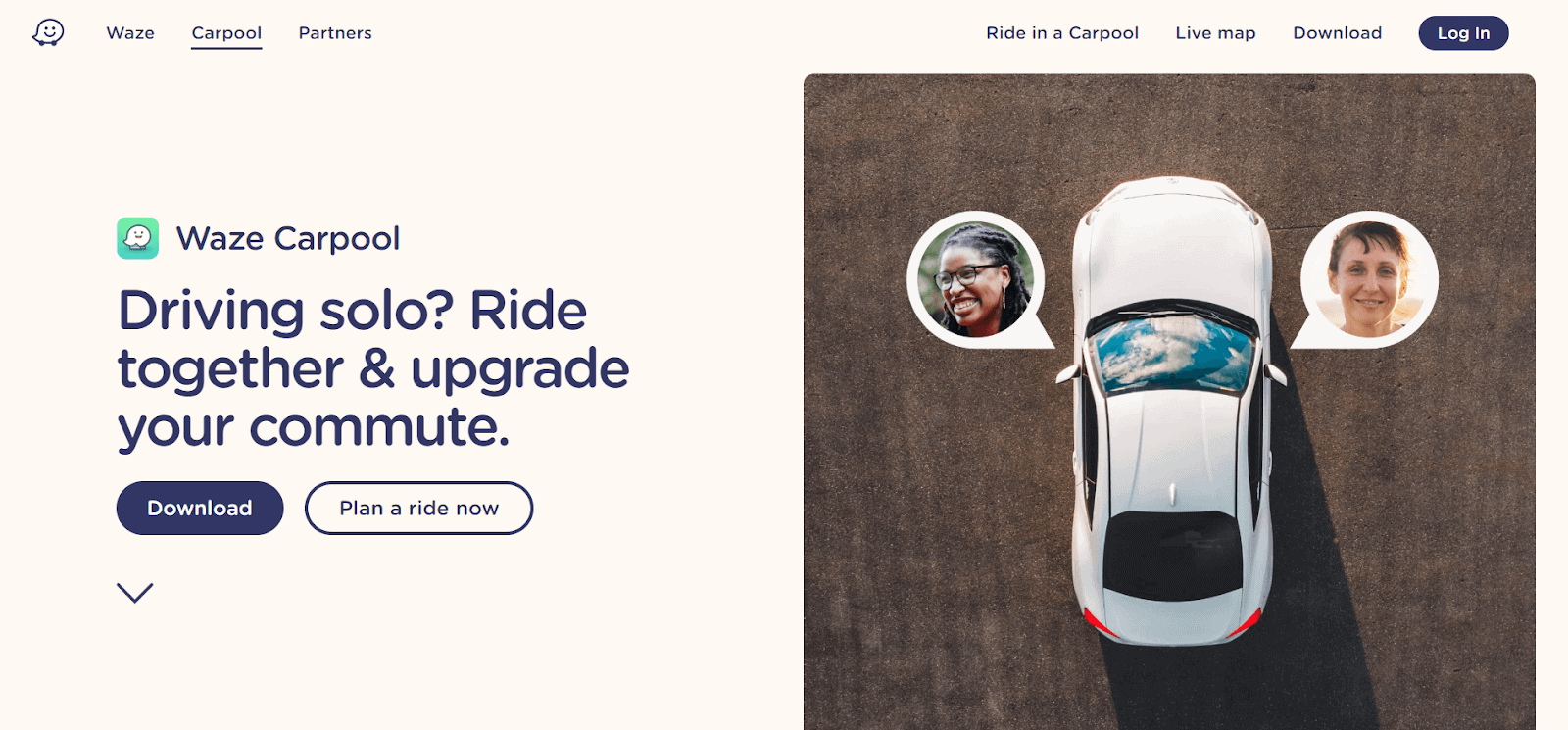
While Waze is best known as one of the best navigation apps today, the company — now owned by Google — actually launched a ride-matching service for carpoolers in late 2018. Waze Carpool connects riders and drivers by taking a note from rideshare technologies.
To use the service, car owners who would prefer to get reimbursed for their route can create their driver profiles, setting their vehicle information and two-way route, through the normal Waze app. Riders can use the Waze Carpool app to request to join carpools that match their route.
Currently, Waze charges riders based on the standard mileage rate, limits drivers to two routes per day, and completely waives its service fee. This means the service is purely dedicated to helping you find fellow carpoolers looking for an affordable way to complete their commute.
Available in the United States, Brazil, Israel, and Mexico, Waze Carpool is the most widely available carpool solution on our list.
2. Scoop
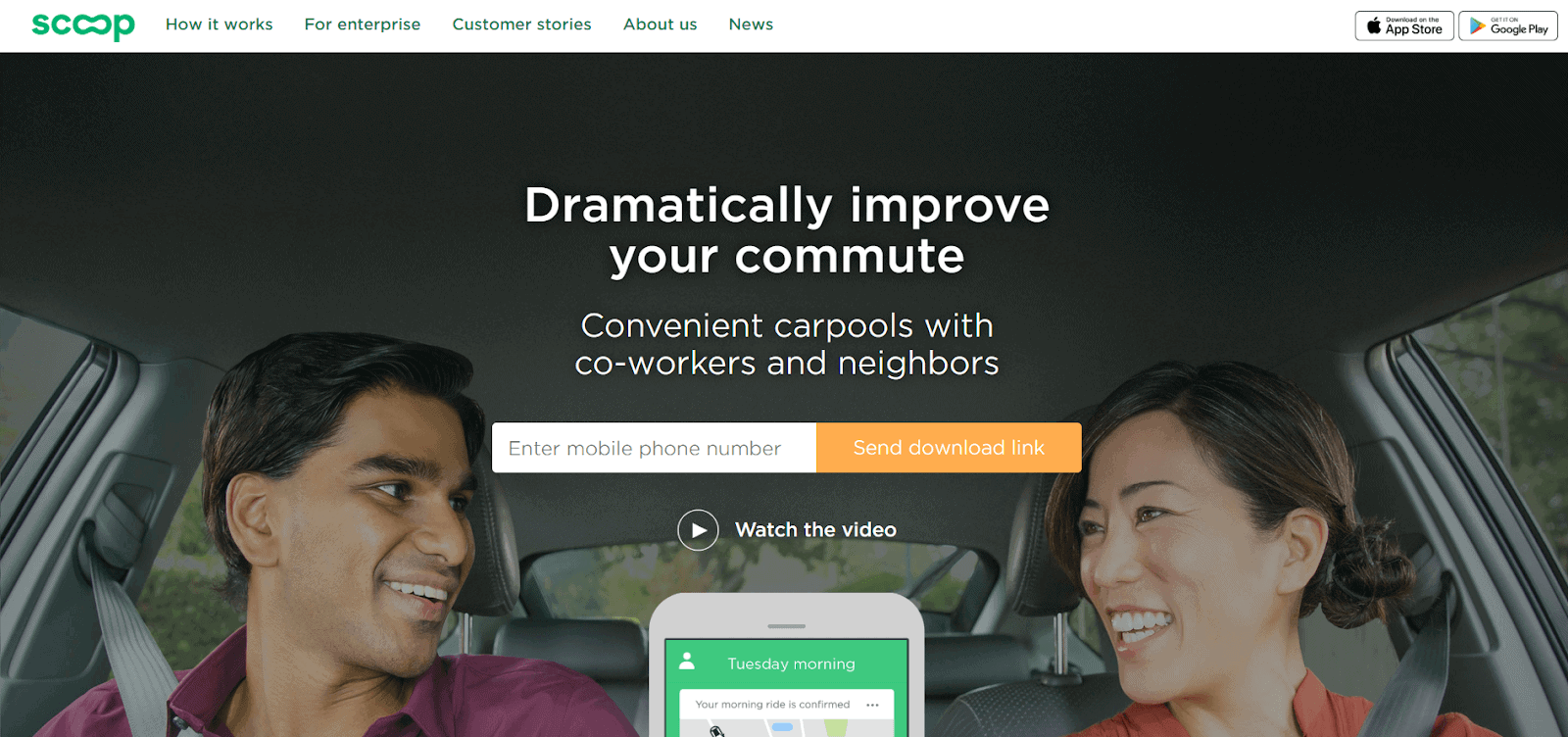
If you want to add an additional layer of safety when choosing your carpool, Scoop is a great service that does so while offering the same convenient ride-matching as Waze Carpool.
The company runs a motor vehicle report on drivers to ensure they don’t have any major violations. While carpool riders aren’t vetted, drivers can remove any rider at any time ahead of the trip.
Scoop also emphasizes its matching service for neighbors and coworkers, helping you find trusted people within your community. Some companies, including LinkedIn and Samsung, actually partner directly with Scoop to create a secure, tight-knit network of commuters.
Because Scoop does take a small fee from drivers’ reimbursement, carpools are a touch more expensive on this platform than on Waze Carpool. However, the average ride can still cost as little as $2 and rarely ever exceeds $10, so your final cost will be around half the price of an Uber.
Drivers can expect to be reimbursed around $2 to $9 per passenger.
While Scoop doesn’t have a list of cities it’s available in, since anyone can use it at any time, but it’s most prevalent in major U.S. cities.
3. Zimride
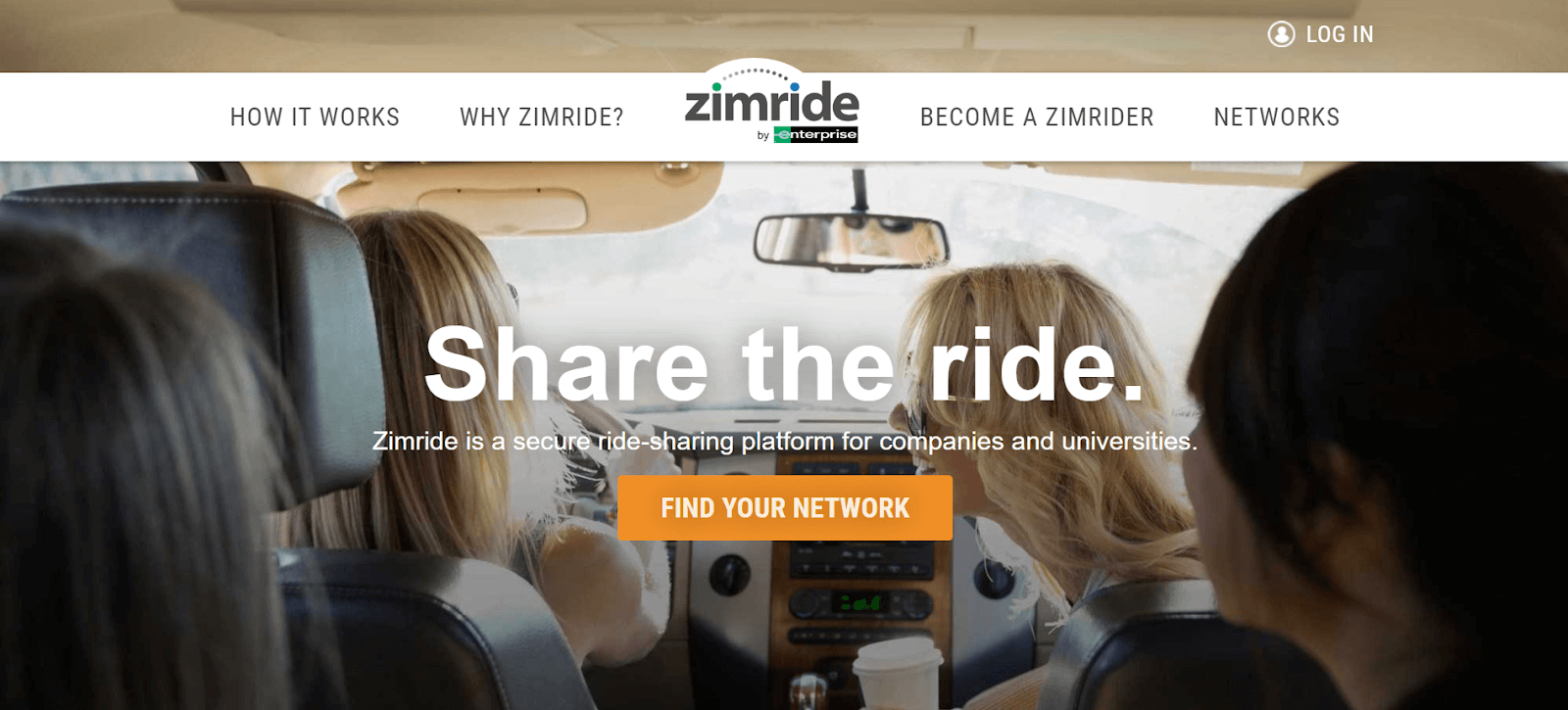
While Waze Carpool and Scoop are available for just about anyone to join, Zimride is unique in the fact that it’s a fully private carpool-matching service.
In order to join, your workplace or university must set up its own private network and invite you to join.
You’re required to use your professional or student email to start finding carpools on this service, and you have the option to connect with your social media accounts, making the safety of Zimride top-notch.
Zimride is a little less convenient because you can’t manage your carpools through a mobile app. Plus, you have to manually post a request for a ride or a request for riders.
Still, it’s a great opportunity to create an ongoing carpool with people who are headed to the exact same location, with no stops in between.
Drivers can also benefit from Zimride because they can set their own prices.
You can be as generous as you want to make new friends, or you can increase prices to make up for local gas prices, insurance rates, and car maintenance.
Zimride is currently available for employees of companies like Verizon and Gap Inc., as well as students of many U.S. colleges, including all University of California campuses.
Before rideshare apps and peer-to-peer car rentals were all the craze, carpools were the natural answer for anyone looking to reduce their expenses without resorting to time-consuming public transit.
Of all the transportation solutions available in the world today, carpooling is one of the simplest. When you have at least one other person sharing a ride with you, you already have a carpool.
Most commonly, it’s a highly informal arrangement in which people decide whose car to take, how often, and how much the driver should be reimbursed.
So how exactly does this differ from rideshare, and what are the pros and cons?
At the heart of modern rideshare is an automated match between a driver and a rider based on their proximity. While services like UberPool and Via rideshare have taken inspiration from traditional carpools, bringing strangers together on a ride headed in one direction, a rideshare service will always have that driver element.
Most notably, rideshare services don’t just pair you with other people on your route who want to save money. You’re also getting connected with a driver who is profiting off of the ride.
When you start a carpool, on the other hand, the person driving is typically just looking to save on gas for a trip they already need to take regardless.
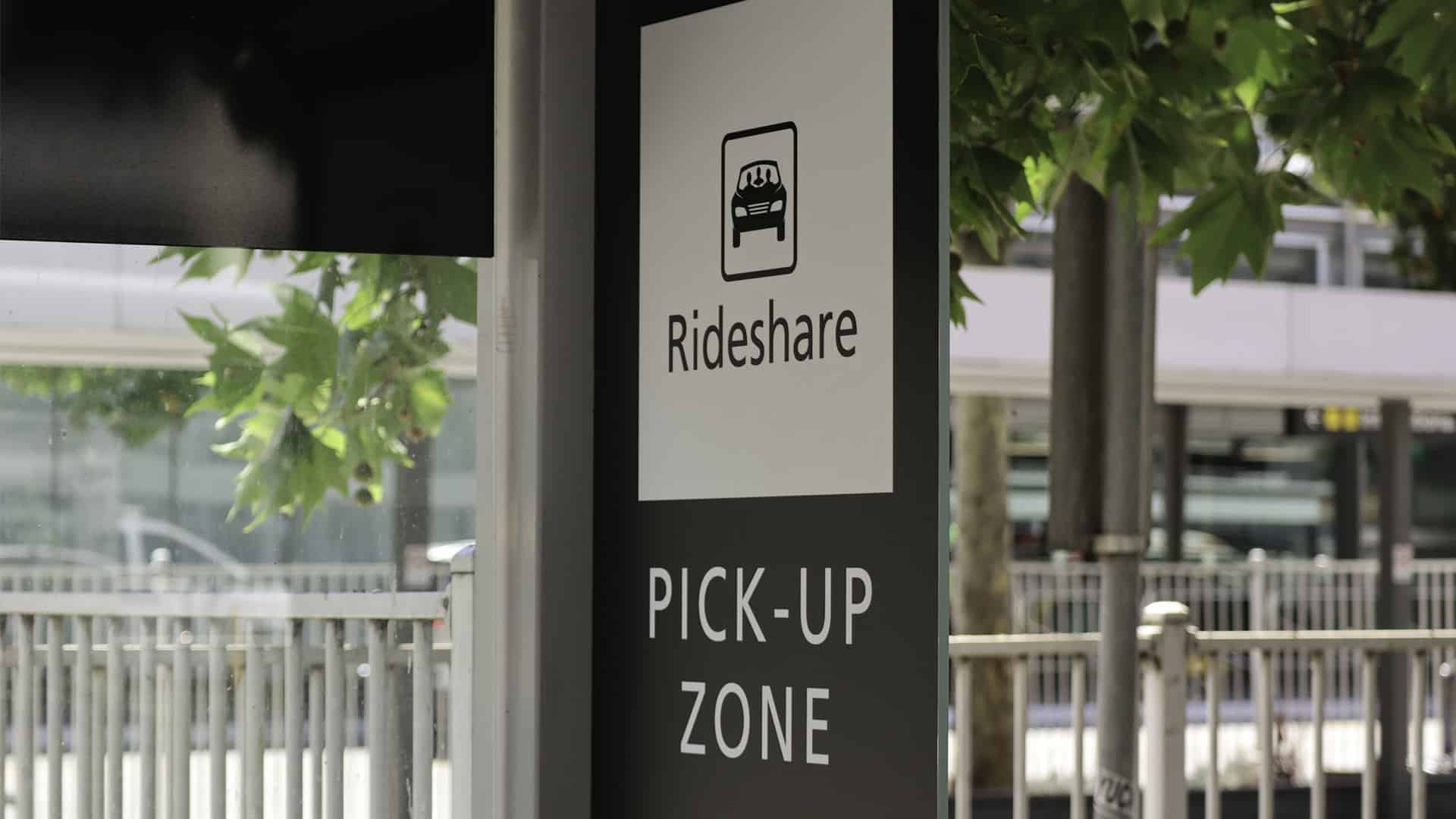
Plus, when you take a shared rideshare trip, you may be making unexpected stops along the way to pick up or drop off co-riders, so it’s unlikely you’ll be taking the same route every time. This means your estimated travel time will be far more precise with a carpool.
The benefit of rideshare is the convenience. You’re guaranteed to have a ride at any desired time frame and you won’t have to change your commuting plans just because someone calls a sick day.
However, the cost of having a driver adds on service fees, surge pricing, and other stacked costs that make it far costlier than a carpool.
Plus, with Uber and Lyft driving around to wait for requests all day, it’s not exactly as environmentally friendly either.
Carpools can also give you the benefit of sharing a ride with familiar, trusted faces each and every day. Rather than riding in an uncomfortable silence, you could be chatting with a coworker or a close friend.
Frequently Asked Questions
Carpools have always been an affordable, sustainable solution, and with its modern refresh, it may soon become a leading commuting option once again. Here are some frequently asked questions to help you learn about carpooling:
How does carpooling differ from vanpooling?
Vanpooling is a ride-matching solution that may be provided by your local department of transportation, company, or school. It functions very similarly to our carpool solutions listed above, but with two key differences.
First, a vanpool always uses a high-occupancy vehicle that’s provided by the organization in charge of the vanpool program and operated by a designated driver.
Second, vanpools typically require a minimum amount of riders, instead of allowing you to have as little as one other carpool member.
Do these platforms allow me to see where my driver is at in real-time?
Currently, they do not. The primary functions of these platforms are to match you with people on your route and schedule, and to help you get paid.
Because of this, these carpool solutions are fairly informal and drivers are not independent contractors who need to keep their apps open at all times. However, you should be able to communicate with your drivers and ask any questions you have.
Am I required to ride every workday if I join a carpool through the platforms above?
No. These carpool services are designed with flexibility in mind, so you can choose to only ride on certain days. Or, if you have a ride home you can depend on, you can choose to save money by requesting only your ride to work.
Make Carpooling Your Solution
Carpools are an incredibly simple transportation solution — so much so that it may not be the first option that comes to mind in our app-obsessed world.
However, it’s actually one of the most practical options out there for anyone who wants to save money and time on their commute, or even for a one-time trip. The best part is, there are no requirements to set up a carpool, so your group can figure out a schedule, route, and terms that work perfectly for you.
If you’re interested in connecting with people on your route outside of your organization, read our guide to the Waze Carpool app to learn how you can get matched with locals.


